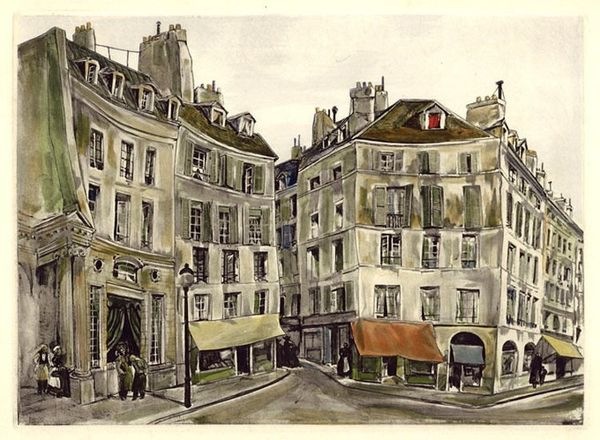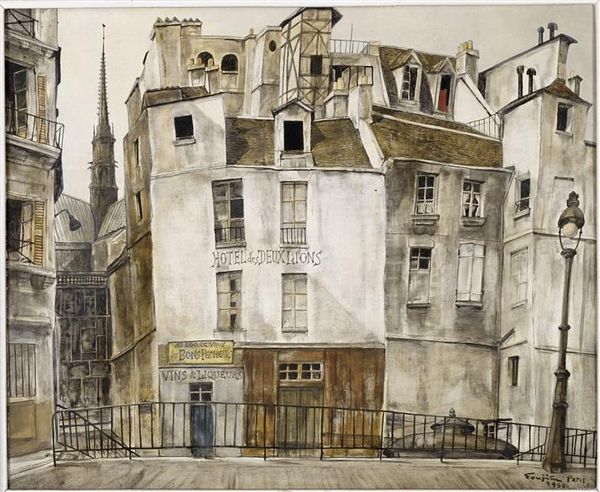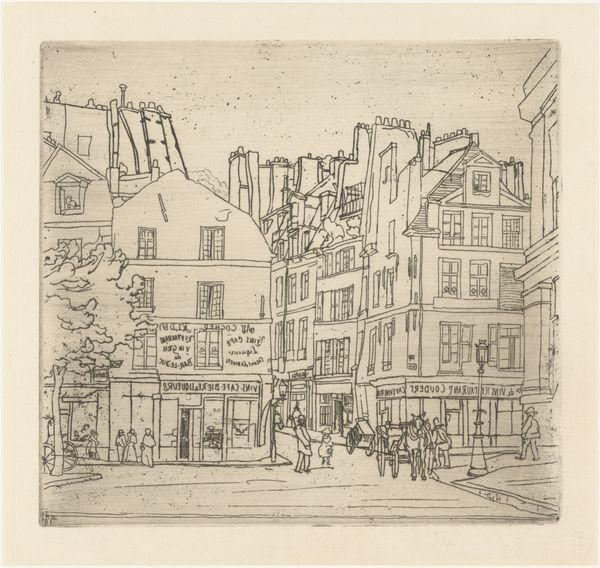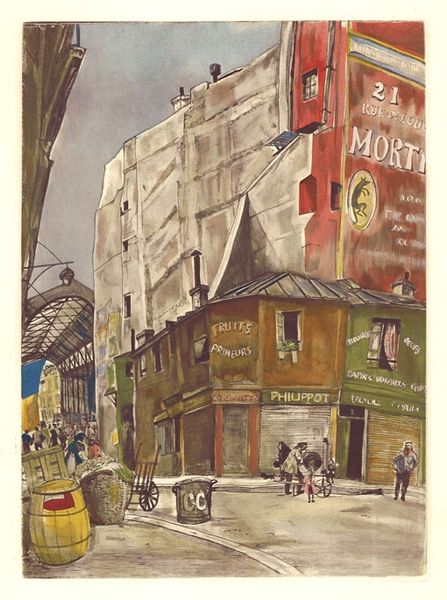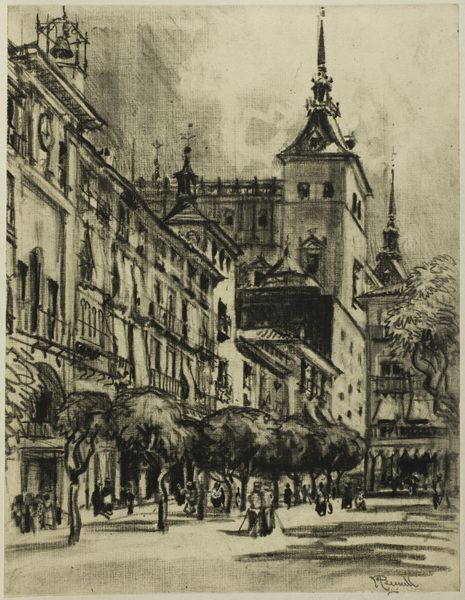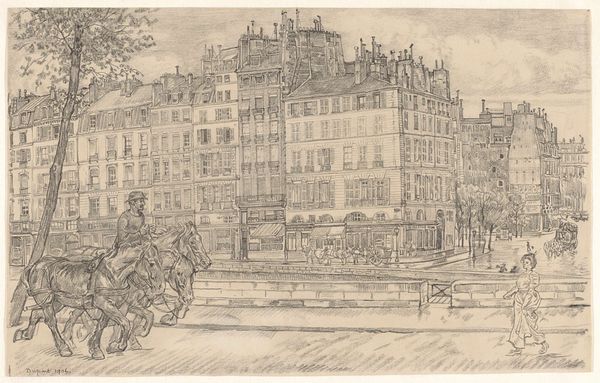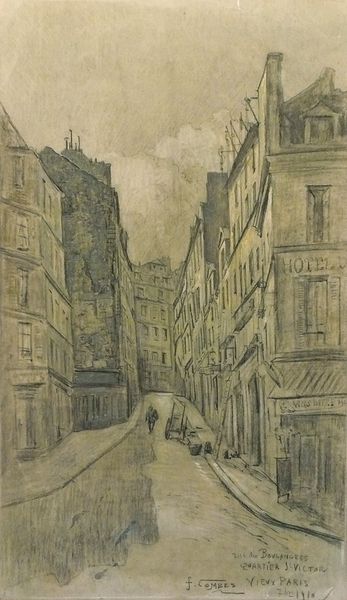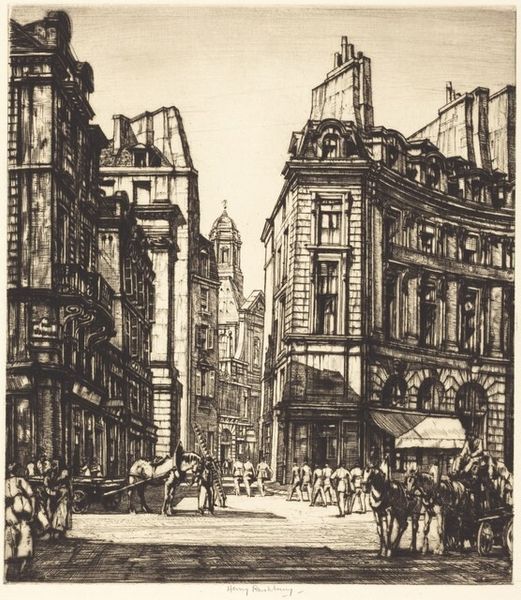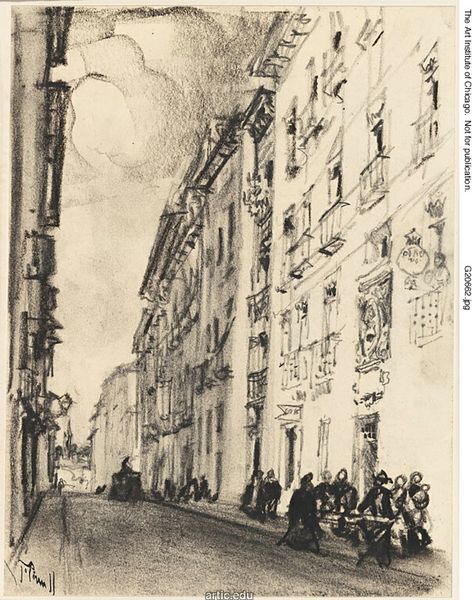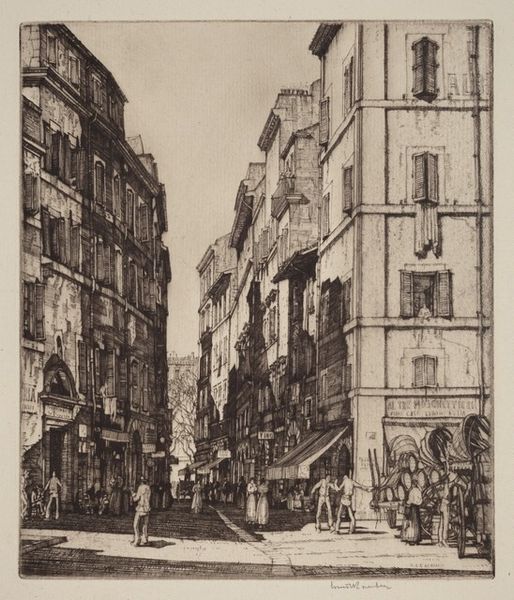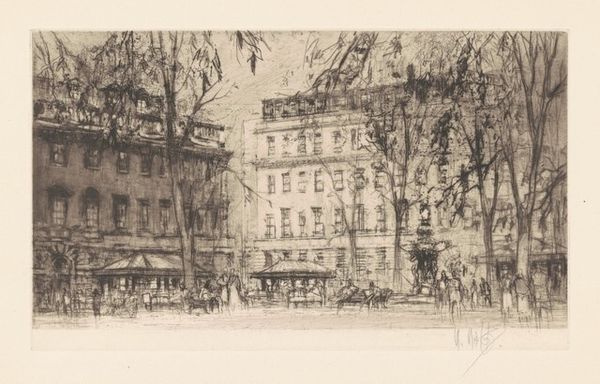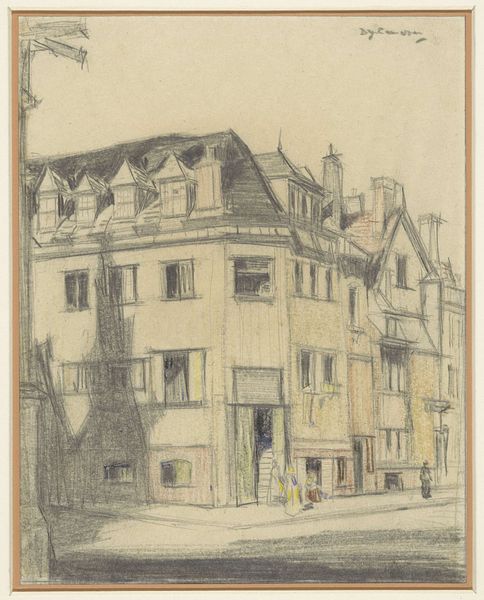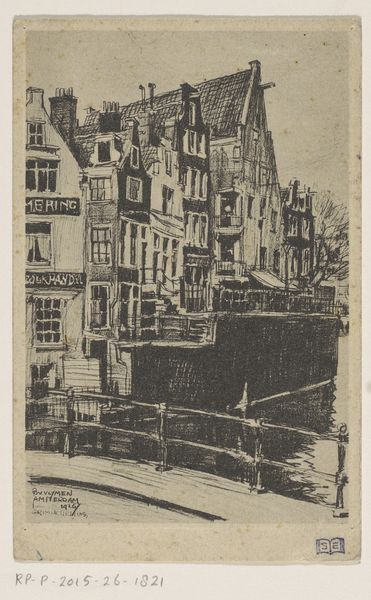
painting, paper, ink
#
street-art
#
painting
#
paper
#
ink
#
ashcan-school
#
architecture drawing
#
cityscape
#
modernism
#
realism
#
building
Copyright: Tsuguharu Foujita,Fair Use
Editor: So this is “Outskirts” by Tsuguharu Foujita, made in 1951 using ink and painting on paper. It looks like a city street scene, maybe Paris? It has a melancholy feel to me. What do you see in this piece? Curator: I see an exploration of the everyday labour embedded within the urban landscape. Notice the specific use of ink and paint; Foujita isn't aiming for photorealistic representation. Instead, it highlights the means of production itself. What kind of labour do you see represented? Editor: Well, there are people gathered near those canopies - it looks like some sort of market, perhaps? And the figure carrying ladders seems to suggest maintenance or construction. Curator: Precisely. And think about the materials: paper, ink, paint. Readily available, mass-produced. How does Foujita elevate them to the realm of art? He is prompting a conversation on the role of labor both within the subject of the image and in its own production. Do you think he challenges a divide of "high art" versus more quotidian image production? Editor: I think so. By focusing on commonplace scenes and using accessible materials, he brings art closer to the everyday experience. He seems interested in democratizing art in some way. Curator: Indeed, this challenges notions of artistic genius, doesn’t it? We focus less on individual artistic flair, and more on a commentary around the social fabric held together through different sorts of activities. Now what if he had chosen oils on canvas? Editor: Interesting point! Oil on canvas would give it a sense of grandiosity that these humble materials avoid. It forces you to think about the subject matter first and what those inhabitants' experience in Paris might be. Curator: Exactly. We see art less as an untouchable object and more as a reflection of a particular context through deliberate choice of labor, and in the art making production. Editor: I never would have considered that materials could inform the subject so deeply! Thanks for showing me that, I've got much to consider. Curator: And I appreciate your perspective. Thinking about audience and access can bring new layers to art analysis!
Comments
No comments
Be the first to comment and join the conversation on the ultimate creative platform.
